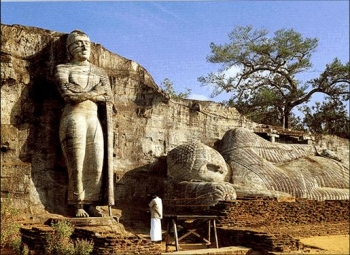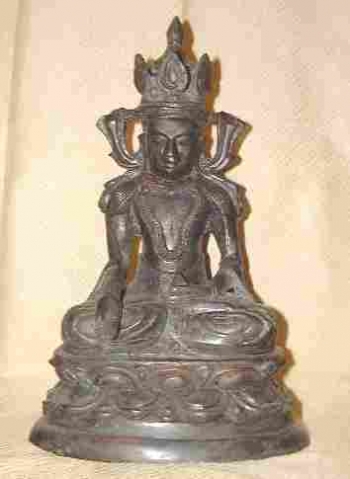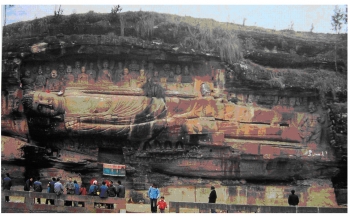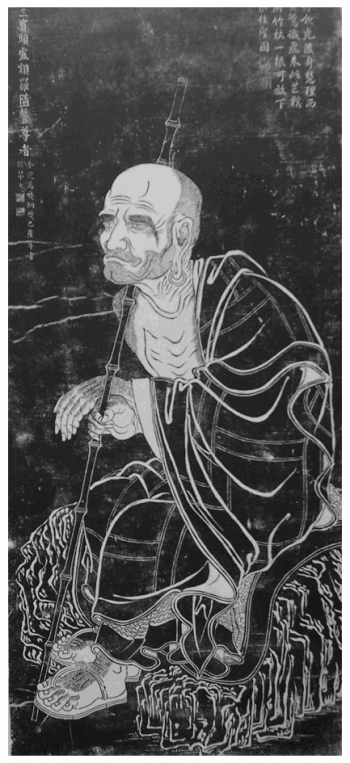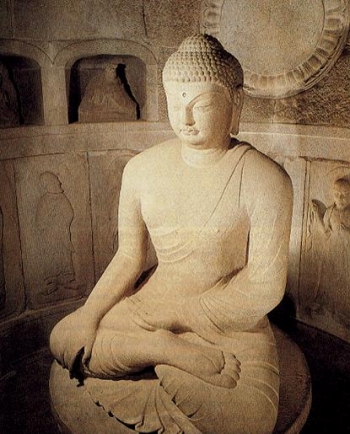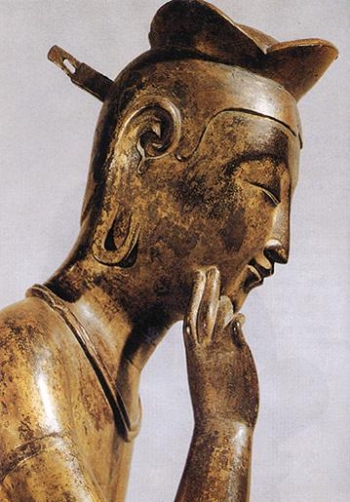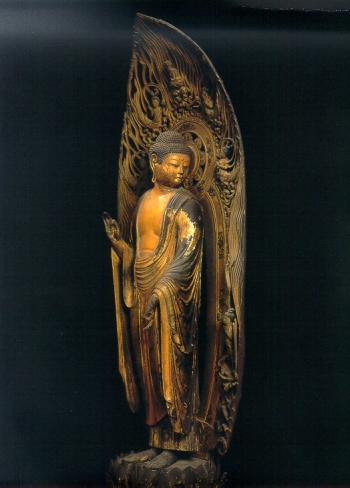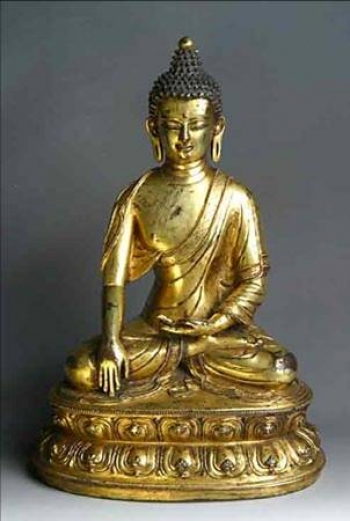Editor’s Note: Dr. Andrey Anatolyevich Terentyev studied Sanskrit, Tibetan and Indian Philosophies and Religions. He obtained his Ph.D. in the field of Oriental Studies (Russia). Currently, he is a visiting lecturer at the International Buddhist College.
The diffusion of Buddhism in Asia led to the appearance of the three major traditions of Buddhist art: (1) Southern (Therav?da countries), (2) Eastern (Chinese) and (3) Northern (Indo-Tibetan).
Buddhism first spread from India to the ‘Southern’ countries of a) Sri Lanka, b) Burma and c) Thailand. In these places we have the Southern Buddhist Art traditions, each having their own distinctive style. One of the characteristics of Southern Buddhist Art is the abundance of parinirv??a images, depicting the lying Buddha on his last day in Kushinagara.
Sri Lanka
Sri Lankan images of the Buddha usually reveal a strong, powerful build, featuring wide shoulders and a peculiarly shaped u????a (an uncommon convexity of a section of the skull that is said to be a mark of enlightenment).
Burma
In Burma, the oldest monuments of the specific Burmese style did not emerge until the Pagan dynasty (1044-1287).
Thailand
In Thailand, images of the Buddha have a more slender body shape and elongated u????as.
The original Emerald Buddha, which is considered to be the most sacred statue of the Buddha in Thailand, was revealed in 1434 when lightning split open a chedi in a rock. Note that the position of the legs of the Buddhas in Thai iconography is different from that of all other traditions, stemming, perhaps, from the famous Emerald Buddha image.
The second great wave of Buddhist diffusion saw the spread of Buddhism from India and Central Asia to a) China, and from there to b) Korea and c) Japan. These Buddhist traditions are usually referred to as ‘Far-Eastern’.
China
The largest of the Longmen caves, Fengxian Temple, was carved 1300 years ago during the Tang dynasty. When it was first constructed, the entire grotto was covered with a roof, enclosed from the natural elements. Today the roof is missing and the sculptures stand out in the open air. The main Buddha figure at Fengxian is a colossal carving of one of the ‘5 Buddhas’ - Vairocana, which legend says bears Empress Wu's features. The Longmen temples were explicitly built in response to Tibetan military success in Central Asia, aiming to bring supernatural succor to the Tang armies. (Clunas, Craig. Art in China. Oxford: Oxford University Press, 1997, p.104).
The traditional style of Buddhist art in China, both in sculptures and paintings, was always freer and simpler than the strict Indian and Tibetan styles, the sublime style of the Thais, and the solid and heavy style of the Sri Lankans.
One of the favorite Buddhist symbols in China is the swastika, the Indian sign of happiness and prosperity, which is common to all Indian religions.
The swastika was included, at least since the Liao Dynasty, as part of the Chinese language, the symbolic sign for the character ?U or ?E (wàn in Chinese, man in Japanese, v?n in Vietnamese) meaning all, and eternality (lit. myriad). The swastikas, facing either direction, appeared on the chest, and also on the soles of the feet of many Chinese statues of the Buddha.
In later times, when Tibetan Lamas settled in Beijing and became spiritual guides for Chinese emperors, Chinese Buddhist art began to be strongly influenced by Tibetan Buddhist iconography, and from the beginning of the 19th Century almost all works were done in accordance with Tibetan canons.
Korea
During the Three Kingdoms period in Silla (Korea), the Buddha was portrayed in a very distinctive style which seems to be essentially Korean. Especially popular during Early Silla was Maitreya or the ‘Buddha of the Future’ (Miruk Posal), often depicted in a meditation pose. A large Maitreya (1) (three feet one inch) with its hand on its chin is the largest of the gilt- bronze images of this early period (National Treasure No. 83). The crown is simple and the torso bare. With an air of grace the drapery falls in soft lines over the pedestal and around the feet. (Adams, Edward B. Art Treasures of Seoul. Seoul: Samhwa Printing Co., Ltd., 1986, p. 79)
Japan
Northern Buddhist Art is the art of the Tibetan cultural area, which besides Tibet also covers Mongolia, some parts of the Himalayas, China and Russia. These later styles initially borrowed widely from Indian and especially Nepalese samples, then from Chinese sources, before eventually developing a distinctive Tibetan flavour.
